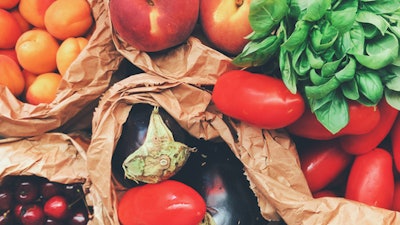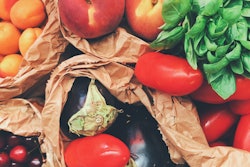
The Coronavirus disease (COVID-19) pandemic has altered our daily lives in extraordinary ways. We’re all doing our best to prioritize what matters most. If grocery store shelves are any indication, food is top of mind right now (second only to social distancing and staying healthy). However, consumers nationwide are buying food based on a different set of wants and desires than previously.
For years, U.S. consumers have expressed a growing interest in developing a closer connection to their food producers — whether through access to more localized markets and/or shorter supply chains. Even before COVID-19, consumers were frequenting a variety of vendors beyond conventional grocery stores, including farmers markets, community supported agriculture and online orders. These changes suggest the local food economy is nimble and ready to respond to consumers’ desire to feel more food secure, connected and supportive of their farms and food producers.
The time is now to address how to support these decisions and allow for more local food purveyors. And, it’s not as much about what producers make as it is what consumers want producers to make.
While federal monetary assistance will provide some short-term reprieve, rethinking the regulatory environment may bear the most fruit to sustain the local food sector. In an economy where tens of thousands of regulations confront producers in their push to bring a product to market, there are plenty worth considering. These regulations are particularly onerous for small producers who can sell directly to consumers, as they often have limited resources to comply with regulations primarily targeted at bigger businesses.
Those who believe food entrepreneurs are discouraged by over-regulation have supported cottage food laws, which relax some of the strict licensing and operational requirements if manufacturing goods that are considered “low risk.” Less than four states had such laws before 2004, but over 38 states report some version of such laws now. In an upcoming article in Agricultural Economic Policy and Perspectives, the authors found cottage food laws have positive impacts on baked good startups, inducing a 4% or 11% increase in employer and non-employer establishments in states that passed cottage food laws.
This has definitely been the case for one bread company in Northern Colorado. Thanks to cottage food laws in Colorado, the Pig and the Plow was allowed to pilot and test their business concept under Colorado’s cottage food laws in 2017, and in 2019, had perfected their recipes and established a large enough direct and wholesale customer base to begin operations in a commercial kitchen. Of course, COVID-19 shut down the restaurant and farmers market accounts in March, but they acted quickly. Owner Erica Glaze benefitted from a “relaxed” regulatory environment to initiate market solutions. Immediately, she leveraged her community-based relationships to establish an online delivery platform to serve customers and vendors alike, creating the opportunity for Pig and Plow to realize its largest sales week ever for the week ending March 28.
It’s also about what consumers want and need – not about what producers can make – that matters.
As long as consumers have wants and needs, the nation’s supply chains will be more than capable of answering those desires. These producers just need to more seamlessly pivot into new niches and market channels in response to consumers’ quickly changing preferences, or in the case of current events, the new market environment food buyers are facing.
But, what if you aren’t a policymaker, but you still want to promote the vibrancy of your local food system in the wake of COVID-19? The best thing is to support local value chains through creative framing and assessment of potential benefits from both market and policy innovations.

















